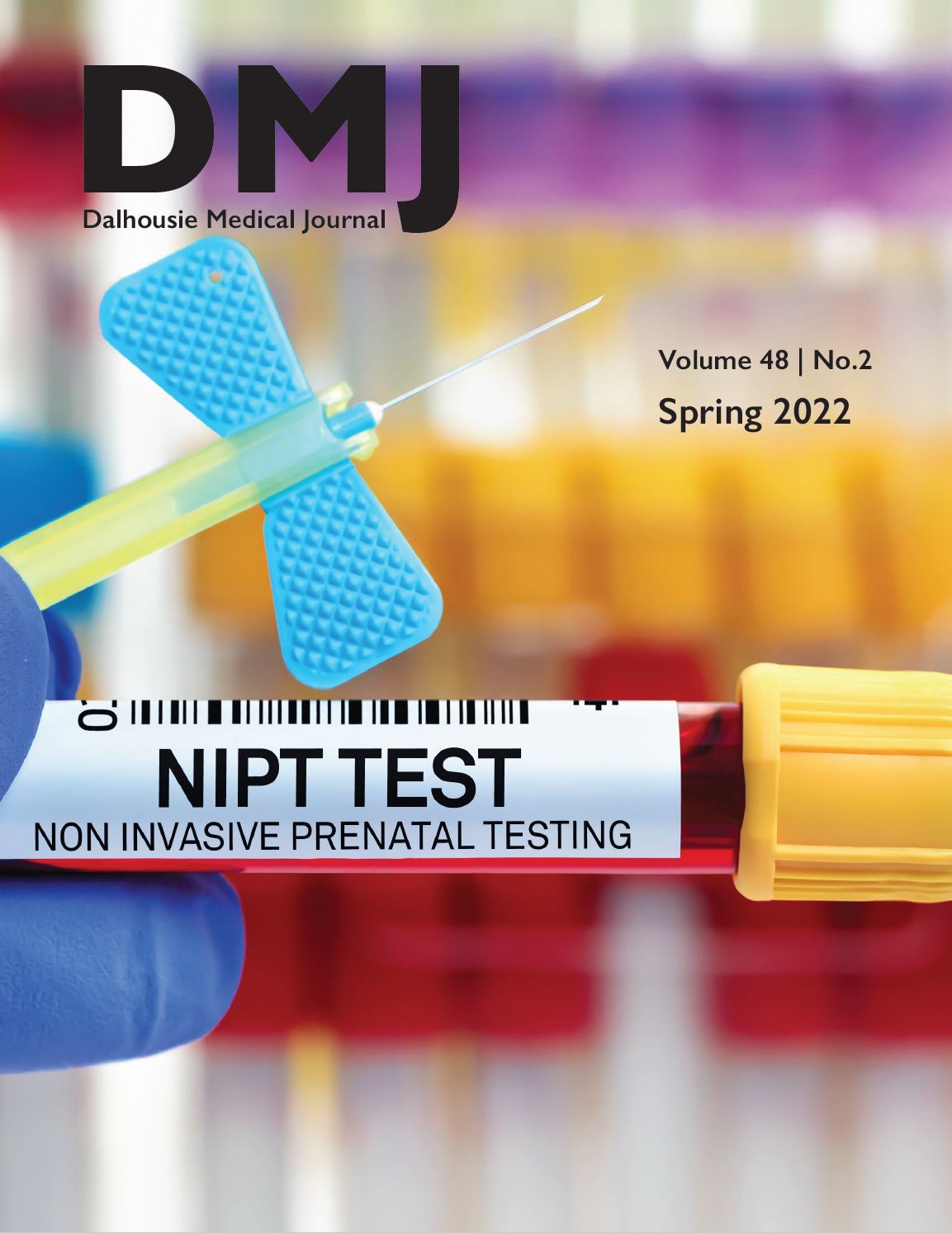The effect of funding non-invasive prenatal testing (NIPT) on invasive procedures performed to identify trisomy 21 pregnancies: A population-based cohort study
DOI:
https://doi.org/10.15273/dmj.Vol48No2.11473Abstract
Background: Screening for Trisomy 21 in Nova Scotia has traditionally included serum integrated prenatal screening (SIPS, maternal serum screening), and integrated prenatal screening (maternal serum screening with nuchal translucency, IPS) for those patients considered to be at high risk. In 2016, non-invasive prenatal testing (NIPT) became available as a funded second tier screen for pregnancies at high risk for Trisomy 21 in Nova Scotia.
Objective: To compare pregnancy characteristics and number of diagnostic procedures performed for high risk of Trisomy 21 before and after introduction of funded NIPT in Nova Scotia.
Methods: This population-based retrospective cohort study evaluated pregnancies with diagnostic testing and/or NIPT which were identified through the IWK Health Clinical Genomics Laboratory Database. Maternal chart review was performed for each pregnancy to confirm eligibility and collect demographic data. Descriptive statistics comparing number of diagnostic procedures and pregnancy characteristics were performed among two epochs – pre-NIPT (2012-2015) and post-NIPT (2016-2019) using Fisher‘s exact test, and rates of Trisomy 21 confirmed by diagnostic testing between the two epochs were described.
Results: The population incidence of Trisomy 21 remained stable and maternal demographics were similar between the two epochs; after the introduction of funded NIPT, the number of diagnostic procedures decreased, and when diagnostic testing was performed, the procedures were 6-fold more likely to confirm Trisomy 21 (95% CI 2.6-12.9) following high risk screening.
Conclusion: The decrease in diagnostic procedures with an increase in the prenatal detection of Trisomy 21 demonstrated in this study illustrates the value of NIPT in a population with limited resources for first trimester screening.
Downloads
Published
How to Cite
Issue
Section
License
Authors who publish with this journal agree to the following terms:
- Authors retain copyright and grant the journal right of first publication with the work simultaneously licensed under a Creative Commons Attribution License that allows others to share the work with an acknowledgement of the work's authorship and initial publication in this journal.
- Authors are able to enter into separate, additional contractual arrangements for the non-exclusive distribution of the journal's published version of the work (e.g., post it to an institutional repository or publish it in a book), with an acknowledgement of its initial publication in this journal.
- Authors are permitted and encouraged to post their work online (e.g., in institutional repositories or on their website) prior to and during the submission process, as it can lead to productive exchanges, as well as earlier and greater citation of published work (See The Effect of Open Access).


